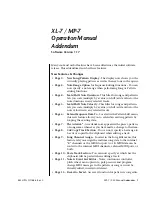
SpO2 Monitoring (Optional)
Using SpO2 to Monitor a Patient
6-5
path alignment and attachment. Check the application site at
regular intervals — at least every two hours — and change the site
if any compromise in skin quality should occur. More frequent
checking may be required due to an individual patient's condition.
Troubleshooting Sensor Application
Failure to apply the sensor properly may cause incorrect measurement of arterial
oxygen saturation.
Do not use a damaged sensor or one with exposed electrical circuits.
Patient Movement
Make sure that the application site chosen does not move excessively, which may
adversely affect the performance of the sensor. You may have to replace the sensor
to ensure good adhesion, or you may have to choose another application site.
Inspecting the Application Site
Inspect the SpO
2
sensor site at least once every 2 hours to ensure adhesion, skin
integrity, and correct alignment of the light emitter and photodetector. Should
alterations of skin integrity occur, remove the sensor and reapply at another
recommended site. Avoid application of the sensor to edematous or fragile tissue.
Check circulation distal to the sensor site routinely.
Circulation at Application Site
Wrapping the tape too tightly, or using supplemental tape, can cause venous
pulsations that could potentially lead to inaccurate saturation measurements.
Therefore, do not wrap the adhesive too tightly and do not use additional tape to
secure the sensor. High positive intrathoracic airway pressures, valsalva maneuvers,
or other consequences of impaired venous return may also cause venous pulsations.
Only use adhesive wraps recommended by Hewlett-Packard.
Summary of Contents for CodeMaster XL+ M1722A
Page 6: ...vi ...
Page 11: ...List of Tables Contents 6 ...
Page 34: ...Defibrillating Defibrillating a Patient 2 10 ...
Page 46: ...Monitoring External Monitoring 3 12 ...






































